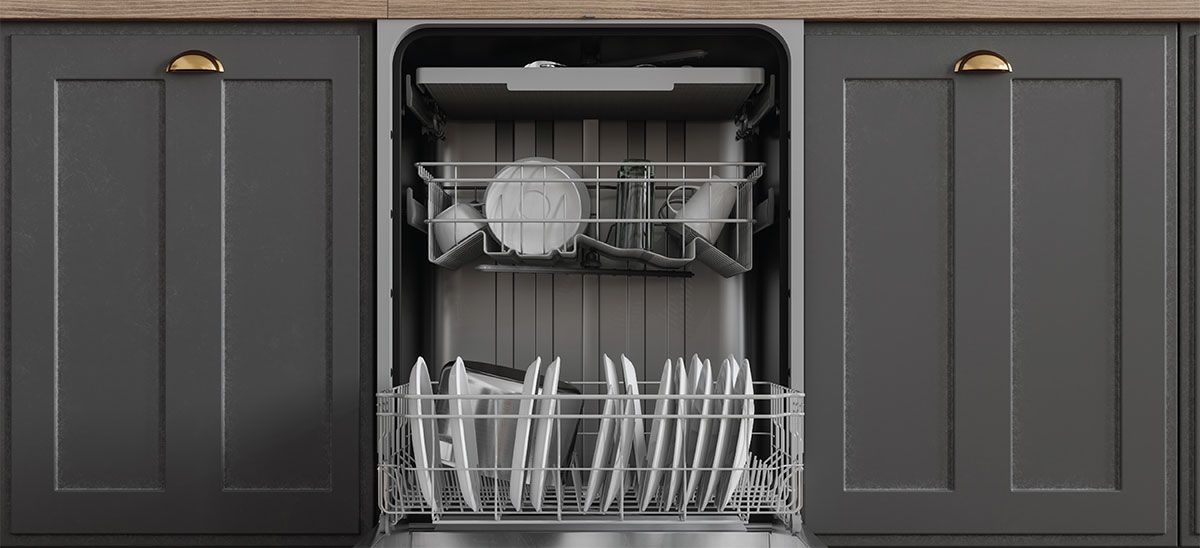APPLIANCE EFFICIENCY

Get the most from your dishwasher
 Most likely, many readers of HOME magazine have a dishwasher in their kitchen. It’s also a safe bet that very few of them are being used in their most effective and efficient manner. Here are 10 best practices you can use to fine-tune your own dishwasher usage and make sure you’re getting the most from this time-saving, must-have appliance.
Most likely, many readers of HOME magazine have a dishwasher in their kitchen. It’s also a safe bet that very few of them are being used in their most effective and efficient manner. Here are 10 best practices you can use to fine-tune your own dishwasher usage and make sure you’re getting the most from this time-saving, must-have appliance.
1 RE-READ THE USER MANUAL
Try to locate where you “filed” the manual that might have come with the appliance … or search for one (you’ll need make and model number) online. You’ll likely find several useful reminders from the machine’s designers and engineers.
2 SCRAPE, BUT DON’T RINSE, YOUR PLATES
Food scraps should be scraped into your garbage or disposal before loading dishes into the washer. This will reduce the build-up of food particles that accumulate in your dishwasher filter/trap. Most experts advise that rinsing plates is not necessary and may actually cause new washers with “dirtiness sensors” to go easy on the load. Rinsing plates, they say, is just wasting water. However, singles or, say, retired couples who – unlike a family with children living at home – won’t typically have a full load by the end of each day may find that rinsing dishes before loading them helps minimize odors and stains.
3 DON’T OVERLOAD
Cramming too many dishes into a load works against the machine’s ability to clean thoroughly. Reasonable spacing allows water to spray throughout the load as intended for most efficient cleaning. Overcrowding may even block wash arms or other moving components, hampering the machine’s performance. Waiting to wash until you have a reasonably full load, however, saves water and electricity. Strive for the happy medium.
4 CHOOSE THE CORRECT CYCLE
Most dishwashers have a choice of different cycle options depending on how dirty your dishes are; using the right one will help save electricity and water. Lightly used (e.g. breakfast bowls, toast plates, etc.) will likely do fine with a light or “economy” cycle. On the other hand, heavily soiled dishes (e.g. those that held lasagna or oily residues) will need a normal or heavy cycle. Rinsing especially dirty plates and cookware may allow them to be washed with lightly-soiled dishes on a “light” or “normal” cycle. Handwashing a few lightly-soiled items may free up space for their really dirty compadres in a “heavy” run.
5 USE A PREMIUM QUALITY DETERGENT
Skimping with off-brand detergent will not clean dishes as well and may lead to water spotting. Premium brands often come in pre-measured “pods” that prevent over-use, helping you economize to some degree. Although using a bit of extra detergent might seem like a good idea, that can cause the extra detergent to clog the machine and cause it to run less efficiently. Excess powder can also leave a residue on your glasses. Substituting a dishwashing liquid will leave your machine and perhaps kitchen floor a foamy mess. Spiking the amount of detergent you use may be helpful if you have very hard water (i.e. water with high levels of calcium and magnesium). But in areas with very hard water, installing a water softener will improve not only dishwashing, but also laundry, showers, hair washing and other general cleaning tasks.
6 USE A RINSE AID
Using a rinse aid will help ensure that dishes come out of the dishwasher sparkling clean and spot-free.
7 CLEAN THE FILTER REGULARLY
The filter or trap is where the food particles are collected. It needs to be checked and cleaned monthly to avoid buildup that can cause odors and interfere with dishwasher functioning. You’ll likely find the filter tucked into a compartment at the bottom of your machine.
8 CLEAN THE SEALS AND ARMS PERIODICALLY
Removing collected food crud from the door seals will prolong the seal’s life and eliminate a source of odors. A bit of dishwashing liquid and a soft brush will easily accomplish the task. The wash arms/spray bars in your machine can get blocked by food particles; manufacturers recommend removing them for a scrub and rinse every few months. Use a toothpick to unclog any clogged spray holes. Your user manual or a YouTube video will guide this easy process.
9 DESCALE YOUR MACHINE
Amazon offers several brands of dishwasher cleaners that will remove calcium buildup. Just put a tablet into the machine, and run an empty wash/rinse cycle every several months.
10 LEAVE THE DOOR OPEN AFTER A CYCLE
Leaving the door a tad ajar after emptying your dishwasher will allow seals to dry completely, which helps reduce mold growth and keeps the machine smelling fresh.
Make your life easier with these dishwasher tips — and hopefully get more longevity from your appliance. ✦
calcium buildup, cycle options, Detergent, dishwasher, door seals, filter, food scraps, reasonable spacing, rinse aid, user manual, wash arms/spray bars







